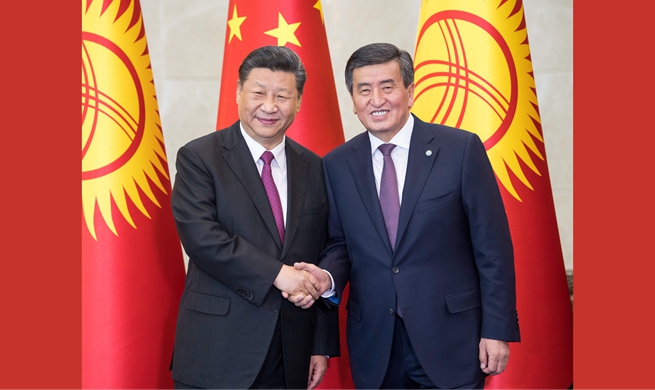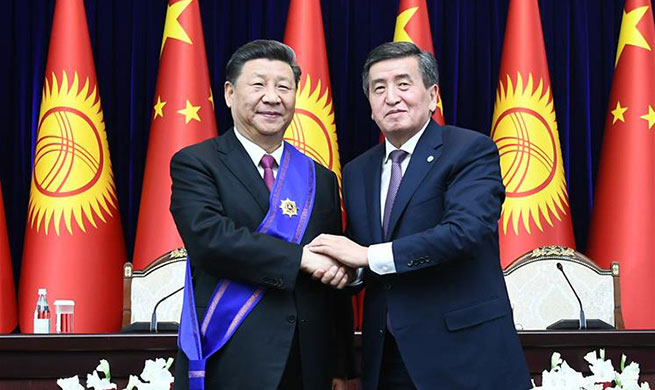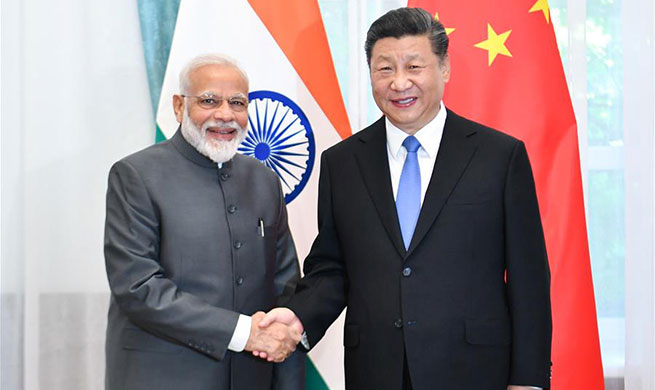by Xinhua writers Ma Qian, Xu Xingtang, and Zhang Mocheng
NEW YORK, June 14 (Xinhua) -- More Chinese companies have been striving to build stronger brands in a global arena. Their brand value rises rapidly, primarily propelled by technology-driven innovation and overseas consumers' acknowledgement, some researchers and reports showed.
"We have seen that the Chinese brands overall have experienced a massive growth," Doreen Wang, global head of BrandZ, a brand equity database managed by brand consultancy Kantar, told Xinhua.
"We have a very big faith in Chinese brands, their current efforts and their future growth potential," Wang said.
SURGE IN BRAND VALUE
A total of 15 Chinese brands gained their footholds in the 2019 BrandZ Top 100 Most Valuable Global Brands ranking this year, according to an annual report released on Tuesday by global communication services provider WPP and Kantar.
Among them, e-commerce heavyweight Alibaba and internet giant Tencent entered the global top 10, ranking No. 7 and No. 8 respectively. Nine brands made their debut in the highly competitive list.
BrandZ is what it describes as the world's largest database for brand equity, which refers to a brand's value based on consumer perception of and experiences with the brand.
Besides, the total value of the top 100 most valuable Chinese brands leaped a record 30 percent to 889.7 billion U.S. dollars, making the largest annual rise since the ranking for Chinese brands was launched in 2011, according to another report titled 2019 BrandZ Top 100 Most Valuable Chinese Brands released in May.
In particular, Chinese technology brands dominate the top 10 in terms of overseas presence. Six brands, including Huawei, smartphone maker Xiaomi, drone maker DJI, AI and humanoid robotic company UBTECH Robotics, double their figures of last year.
STRONGER BRAND POWER OVERSEAS
A separate study also showed that the brand power -- a BrandZ measure of brand equity -- of Chinese brands in the global market, expanded by 15 percent year on year, compared with the 5 percent growth last year.
The strongest growth of brand power appeared in mobile gaming, e-commerce and smartphone. Huawei, Lenovo, and Alibaba are the top three in the 2019 Top 50 BrandZ Chinese Global Brand Builders ranking released in April.
The study also found that brand power has been rising fastest in Japan, France and Spain. Other countries with massive future import potential for Chinese brands involve the United States, Britain, Germany and Australia.
"These products and platforms are Chinese owned, designed, or originate from China. They adhere to global standards," Elspeth Cheung, global BrandZ valuation director at Kantar, told Xinhua on Wednesday.
BETTER PERCEPTION, TECH-DRIVEN INNOVATION
The remarkable growth in total brand value of Chinese firms was propelled by various brands' speedy expansion into China's lower-tier cities. Rising purchase power among consumers and more positive comments from overseas consumers towards Chinese consumers are some other factors behind, according to the ranking report in May.
"We have to recognize that the perception of (overseas) consumers toward Chinese brands has changed significantly," said Wang on Tuesday, adding that those brands were not just getting into local markets, but also setting up a cool image of being leading innovators.
Particularly, innovators in e-commerce, video streaming and social media fields have performed quite well, which made western companies like YouTube and Facebook "start to look at the east" to learn how to twine social network with commercial patterns, according to Wang.
Chinese video streamers iQiyi and Youku achieved some of the fastest growth in brand value last year, rising 158 percent to 5.6 billion dollars and 136 percent to 5 billion dollars respectively, according to the May report.
"YouTube is studying (from) iQiyi and TikTok," said Wang. "Facebook is also studying (from) Wechat and how it connects social network with commerce."
"Nowadays when we ask overseas consumers, they think Chinese brands are innovative and creative, especially young consumers in Spain, the UK and the United States," she noted.
Wang also noted that China's Belt and Road Initiative has given Chinese brands some "real guidance and a lot of support," so that they can "get their products there and promote their presence to local consumers."
"We are seeing lots of Chinese brands start to increase cultural and social influence in overseas markets, especially countries alongside the Belt and Road..." she stressed.
LOCALIZATION IS NECESSARY
Wang also pointed out what challenges Chinese companies are facing in the global brand landscape, as the overall recognition of Chinese brands abroad is still relatively low.
"Having your products there in the market does not mean that you have a brand," Wang said. "Brand building is not happening overnight. So that's why (when) we're seeing Chinese brands, like Alibaba, Tencent, Meituan and Didi, they are all working very hard to build their equity day in and day out."
"There is a long way to go," she added.
To strengthen their brand building in international markets, both Wang and Cheung suggested that Chinese companies should improve their ability in story-telling about their products and how the products would make a difference to the lives of their consumers, so as to promote their brands' reputations.
"We highly recommend the Chinese brands to really explore local lifestyles, local insights, and local media habits," she said. "How to deliver great customer experience and how to generate more bonding with consumers are key."
Cheung further noted that they found Chinese brands with greater popularity overseas have used "mainstream media to interact with their target consumers."
"Consumers are willing to pay more for a unique and differentiated product and service that they could not find elsewhere. In this regard, a possible way for consumers to pay more for a brand is through not only a differentiated product, but the employment of communication channel, delivery, packaging, etc. to create this point of difference," she said.
"Going forward, Chinese brands must be clearer about what makes them different and build up brand recognition, if they are to compete successfully against strong global brands," Cheung stressed.

















